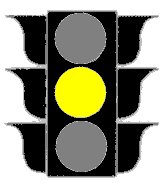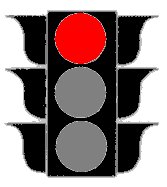How to Use Your Peak Flow Meter
A peak flow meter helps you check how well your asthma is controlled.
Peak flow meters are most helpful for people with moderate or severe asthma.
This guide will tell you (1) how to find your personal best flow number,
(2) how to use your personal best number to set your peak flow zones, (3)
how to take your peak flow, and (4) when to take your peak flow to check
your asthma each day.
Starting out: Find your personal best peak flow
number
To find your personal best peak flow number, take your peak flow each
day for 2 to 3 weeks. Your asthma should be under good control during
this time. Take your peak flow as close to the times listed below
as you can. (These times for taking your peak flow are only
for finding your personal best peak flow. To check your asthma each
day, you will take your peak flow in the morning. See below.)
-
Between noon and 2 pm each day
-
Each time you take your quick-relief medicine to relieve symptoms.
(Measure your peak flow after you take your medicine.)
-
Any other time your doctor suggests
Write down the number you get for each peak flow reading. The highest
peak flow number you had during the 2 to 3 weeks is your personal best.
Your personal best can change over time. Ask your doctor when it
is time to check for a new personal best.
Your peak flow zones
| |
Your peak flows zones are based on your personal best peak flow number.
The zones will help you check your asthma and take the right actions to
keep it controlled. The colors used with each zone come from the
traffic light. |
 |
Green Zone (80 to 100 percent of your personal best) signals
good control. Take your usual daily long-term control medicines,
if you take any. Keep taking these medicines even when you are in
the yellow or red zones. |
 |
Yellow Zone (50 to 79 percent of your personal best) signals
caution:
your asthma is getting worse. Add quick-relief medicines.
You might need to increase other asthma medicines as directed by your doctor. |
 |
Red Zone (below 50 percent of your personal best) signals medical
alert! Add or increase quick-relief medicines and call your doctor
now. |
Ask your doctor to write an action plan for you that tells you:
-
The peak flow numbers for your green, yellow and red zones.
Mark the zones on your peak flow meter with colored tape or a marker.
-
The medicines you should take while in each peak flow zone.
How To Take Your Peak Flow
1. Move the marker to the bottom of the numbered scale.
2. Stand or sit up straight.
3. Take a deep breath. Fill your lungs all the way.
4. Hold your breath while you place the mouthpiece in your mouth,
between your teeth. Close your lips around it. Do not put your
tongue inside the hole.
5. Blow out as hard and fast as you can. Your peak flow
meter will measure how fast you can blow out air.
6. Write down the number you get. But if you cough or make
a mistake, do not write down the number. Do it over again.
7. Repeat steps 1 through 6 two more times. Write down
the highest of the three numbers. This is your peak flow number.
8. Check to see which peak flow zone your peak flow number is
in. Do the actions your doctor told you to do while in that zone.
Your doctor may ask you to write down your peak flow numbers each day.
You can do this on a calendar or other paper. This will help you
and your doctor see how your asthma is doing over time.
Checking Your Asthma: When to use your peak flow meter
-
Every morning when you wake up, before you take medicine.
Make this part of your daily routine.
-
When you are having asthma symptoms or an attack. And after
taking medicine for the attack. This can tell you how bad your asthma
attack is and whether your medicine is working.
-
Any other time your doctor suggests.
-
If you use more than one peak flow meter (such as at home and at school),
be sure that both meters are the same brand.
Bring to each of your doctor's visits
-
Your peak flow meter
-
Your peak flow numbers if you have written them down each day.
-
Also, ask your doctor or nurse to check how you use your peak flow meter
-- just to be sure you are doing it right.
This page is based on the Practical Guide for the Diagnosis
and Management of Asthma, a publication of the National Heart, Lung
and Blood Institute of the National Institutes of Health of the United
States
NIH Publication No. 97-4053, October 1997
Please direct all comments to: 





